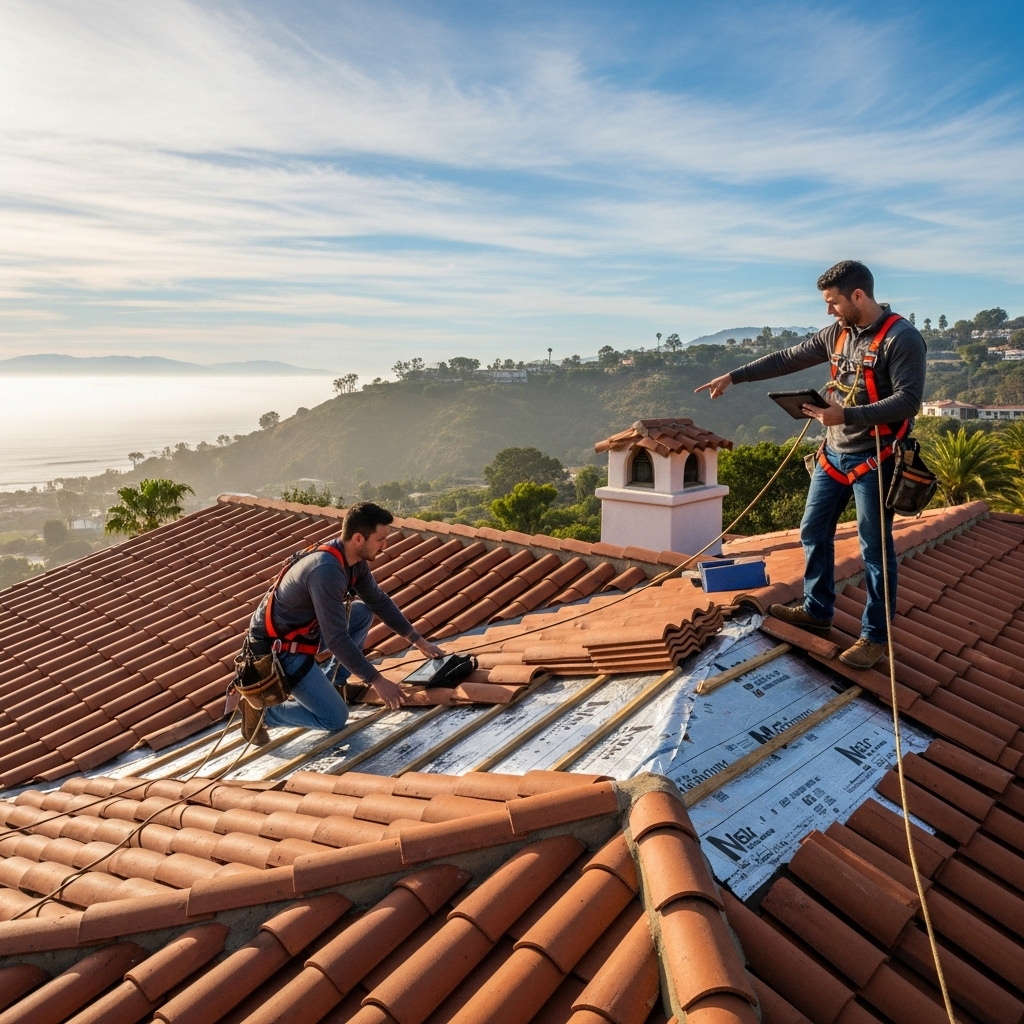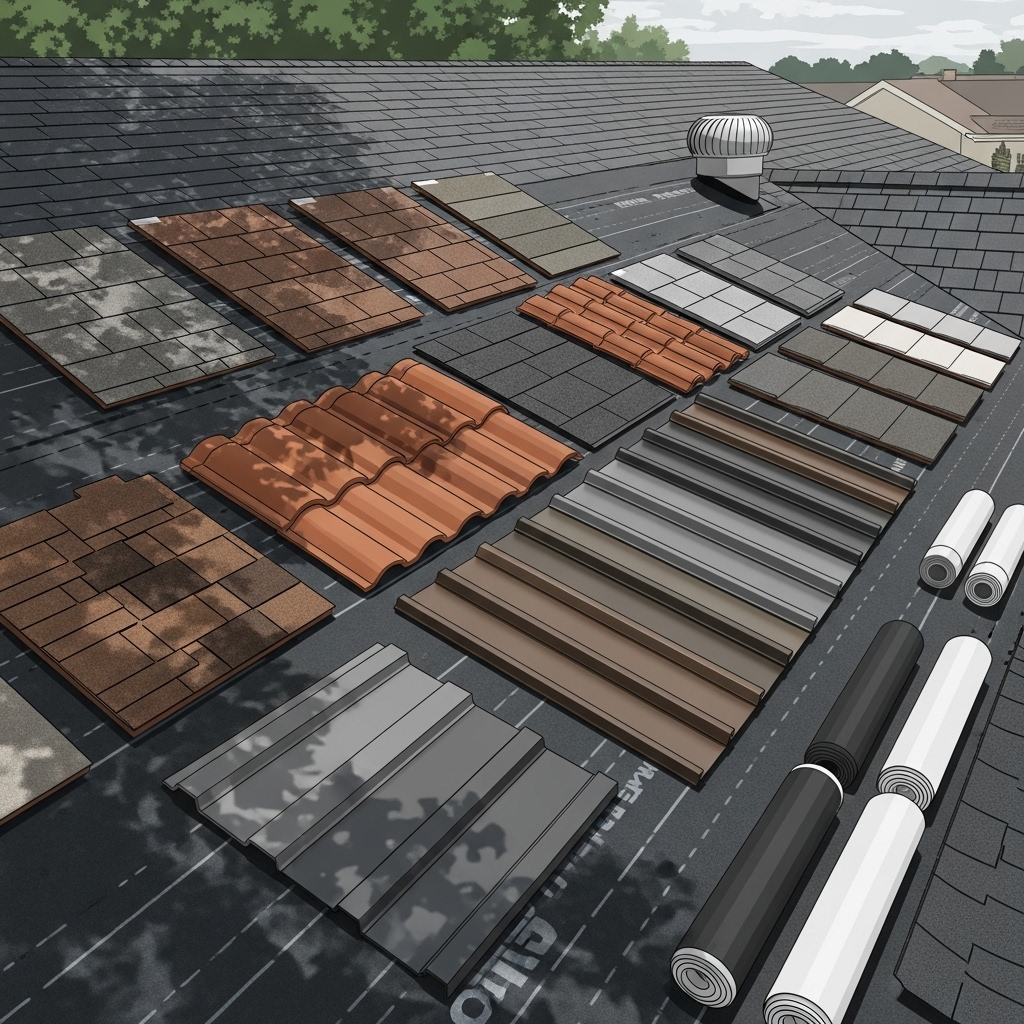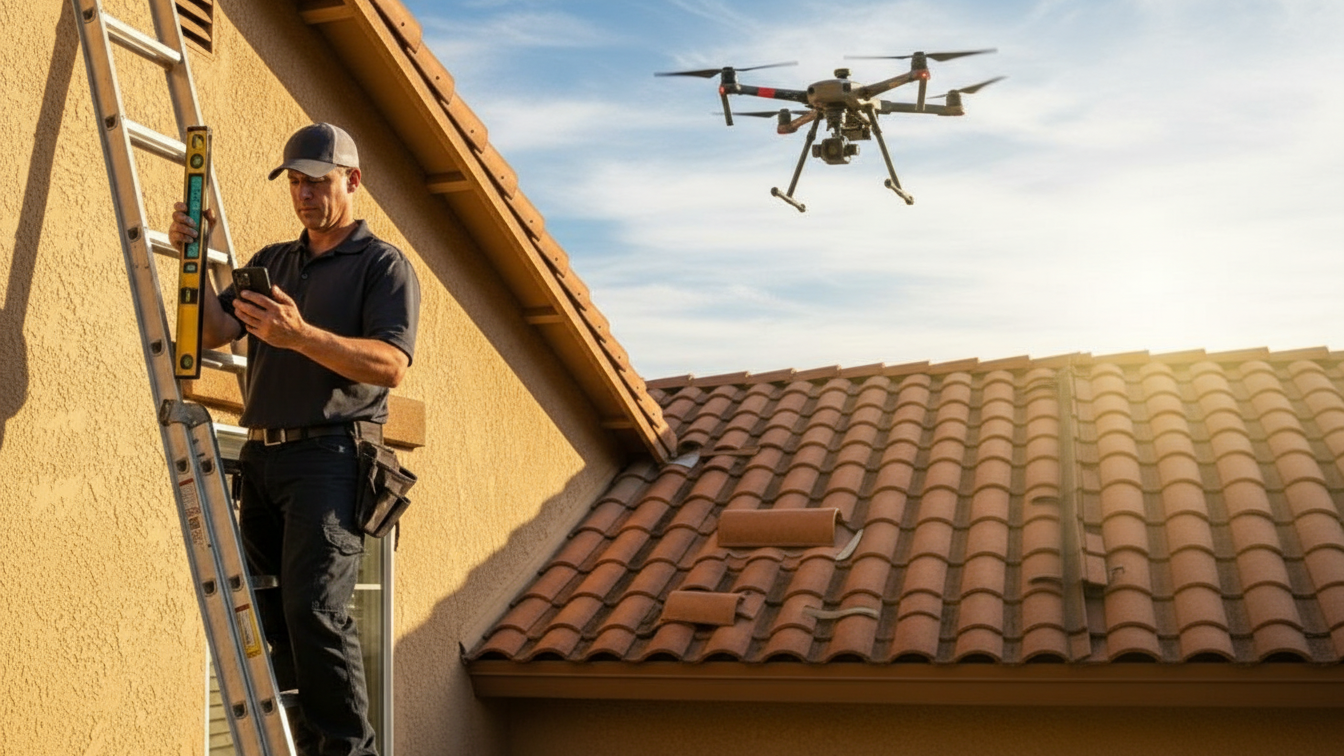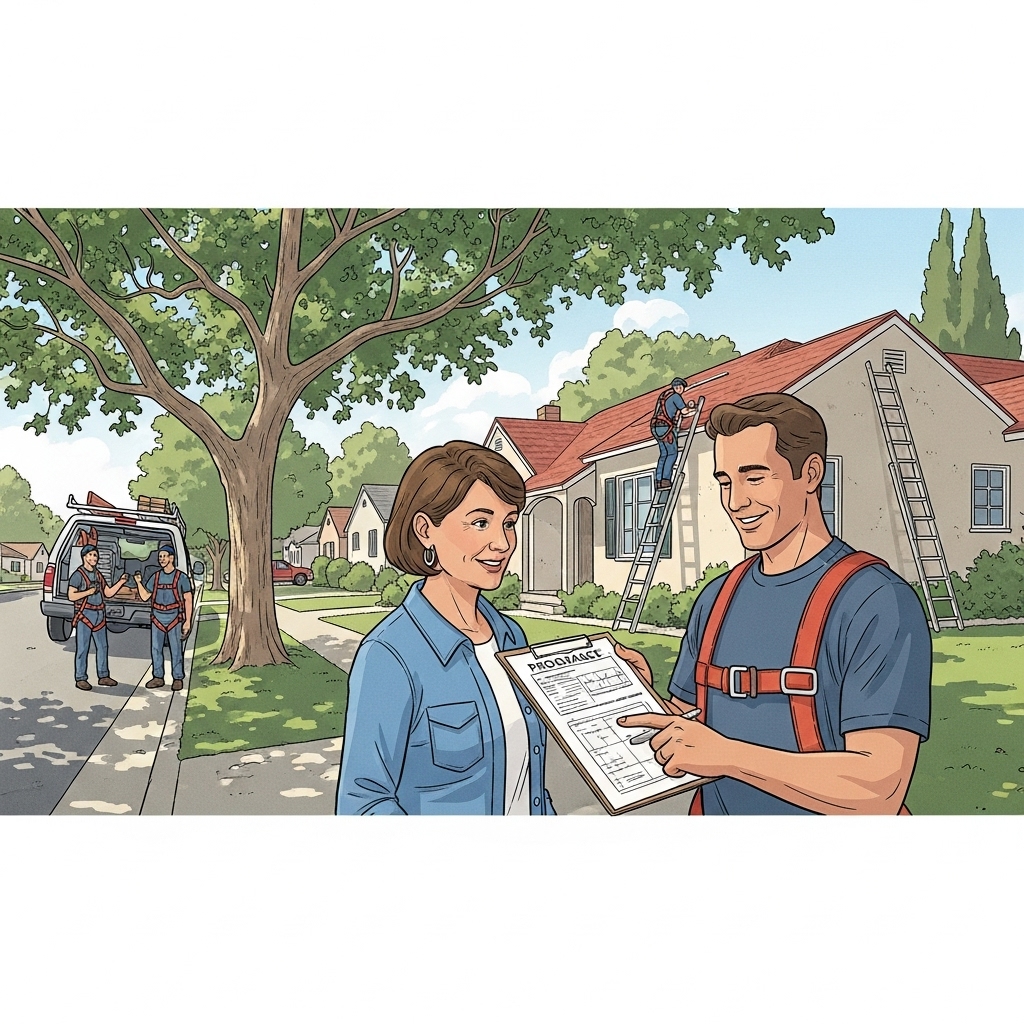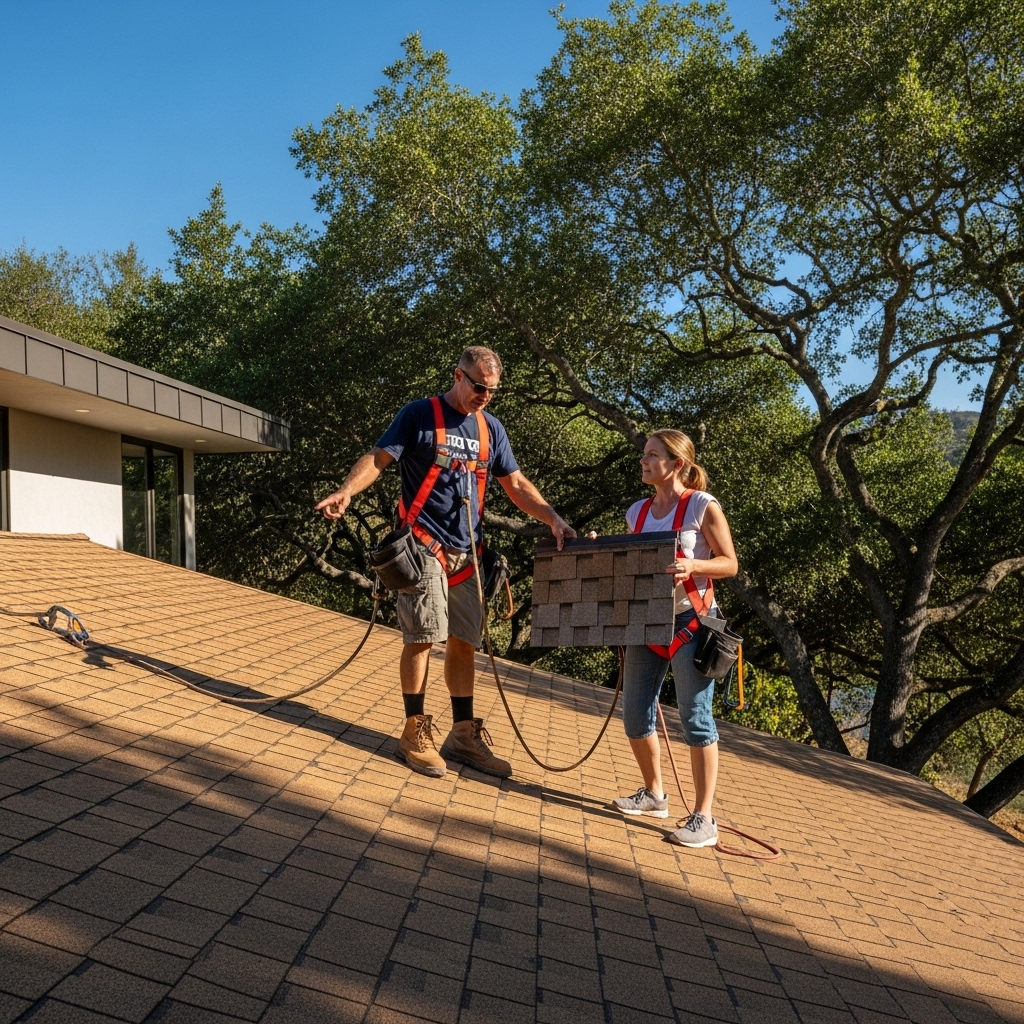When you live and work in Santa Barbara, you come to realize that roofing is about far more than shingles and nails. It is about climate nuance, code literacy, neighborhood character, and respect for a coastline that can shine bright in the afternoon and mist over by evening. That is why choosing licensed professionals for cool roofing work matters so deeply here. A properly designed reflective roof needs to meet California’s energy standards, contend with the city’s architectural heritage, and stand up to marine air and the occasional Sundowner wind sweeping off the Santa Ynez Mountains. The difference between an average experience and a lasting roof often comes down to how well a contractor translates those local realities into careful planning and craftsmanship.
What “licensed” really means in California
In California, a roofing contractor’s license is more than a badge; it is a commitment to consumer protection, safety training, and legal compliance. Licensed contractors have demonstrated experience, passed state examinations, and carry the appropriate insurance and bonds required to legally work on your home. In Santa Barbara, where Title 24 energy requirements and local wildfire mitigation standards intersect with design review in certain districts, a licensed contractor becomes your navigator. They understand the steps needed to secure permits, schedule inspections, and document materials that meet both performance and aesthetic expectations. When they recommend a reflective membrane or a high-SRI tile, they are doing so with a clear understanding of how those choices satisfy energy code while preserving the spirit of Spanish Colonial Revival styles that give many neighborhoods their charm.
Why local expertise is essential on the South Coast
Santa Barbara’s microclimates shift quickly as you move from the Mesa to the Riviera, from San Roque to Montecito, and out toward Goleta and Carpinteria. A morning marine layer can saturate the air, then break into sun strong enough to warm a clay tile roof in minutes. Licensed local contractors design cool roofs around those swings. They choose reflective finishes that hold up against salt-laden breezes, specify fasteners and flashings that resist corrosion, and plan for ventilation that helps attics breathe whether foggy or clear. They also consider access routes on hillside properties, narrow streets near the Mission, and coastal wind exposure along Shoreline Drive. All of this informs how materials are staged, how safety lines are set, and how the work proceeds without disrupting daily life.
Materials that fit Santa Barbara’s look and climate
Residents often assume cool roofing must look stark or industrial, but licensed contractors know that Santa Barbara’s palette can harmonize with reflectivity. For sloped roofs, there are high-reflectance tiles and shingles in warm, muted tones that blend with stucco and courtyards. For low-slope roofs typical of mid-century and contemporary homes, white and light-colored single-ply membranes, reflective cap sheets, and fluid-applied coatings provide modern energy performance. Contractors will match the assembly to the structure: robust underlayment that handles thermal cycling, corrosion-resistant drip edge and valley metal, and flashings shaped to meet the profile of Spanish tiles. That attention to detail keeps moisture out during those damp dawn hours and sheds intense afternoon sun with reliable reflectance.
Building science behind a cool roof in a coastal city
A cool roof works by reflecting solar radiation and radiating absorbed heat more effectively, which keeps the roof surface cooler and reduces heat flow into the building. In Santa Barbara, that means a home in the Upper East can stay more comfortable through a warm, still evening, while a cottage near the beach sees less heat load after a foggy morning burns off. Licensed contractors translate that science into the field: they understand how attic ventilation, insulation levels, and roof color combine to change interior comfort. They also anticipate dew point and condensation risk in our marine environment, detailing underlayments and vents so moisture has a path out and not in. The payoff is quieter HVAC cycles, steadier indoor temperatures, and roofs that age more gracefully under UV exposure.
Wildfire, wind, and the code landscape
Parts of Santa Barbara sit in or near the wildland–urban interface, where ember resistance and Class A fire ratings are non-negotiable. Licensed contractors specify assemblies and accessories that meet ignition-resistant construction requirements, including proper valley protection, metal edge details, and screened vents where appropriate. They think about embers during a Sundowner event just as much as they think about the afternoon sun baking a white membrane. And because they move through the city and county permitting systems daily, they know how to document compliance with energy and fire codes without slowing your project.
Historical sensitivity and architectural continuity
From the red tile traditions influenced by the 1925 rebuild to the Mediterranean courtyards that define many properties, Santa Barbara embraces history. A licensed cool roofing contractor will collaborate on color and profile choices that maintain the rhythm of the streetscape, especially in areas where design review is part of the process. They can propose high-reflectance tile options that look traditional from the curb but deliver modern performance, and they can plan flashing details so that rooftop profiles remain clean and unobtrusive. That sensitivity to context ensures your neighbors appreciate the improvement even if they cannot see the technical sophistication under the surface.
Project planning that respects your routine
Roofing can be noisy and disruptive; the right team acknowledges that upfront. Licensed contractors in Santa Barbara know how to plan around school drop-offs on narrow streets, coordinate deliveries on steep drives, and protect landscaping that often includes mature, cherished plantings. They’ll review staging areas, debris management, and daily cleanup so homes remain welcoming throughout construction. They will also communicate about marine layer delays and wind holds, adjusting schedules transparently rather than rushing work in unsafe conditions. That cadence builds trust as well as a better roof.
Quality control, inspections, and documentation
Inspection sequences are part of any permitted project. A licensed contractor leads you through them, from sheathing checks to final sign-off. In cool roofing, they may perform adhesion tests for coatings, heat-weld integrity checks for single-ply seams, or fastener pattern verifications on recover projects. They document product datasheets that show solar reflectance and thermal emittance values required by energy standards. And they photograph concealed work so you have a record long after the roof is complete. This culture of documentation protects your investment and supports manufacturer warranties.
Maintenance as a design principle
One of the best markers of a licensed professional is how they talk about maintenance on day one. Cool roofs retain their performance with occasional cleaning and regular inspections, especially in salt air. A good contractor will set realistic expectations: rinse a membrane to maintain reflectivity, trim back branches that can deposit organic debris, clear scuppers before the first fall rain. They may suggest a service plan aligned with seasonal patterns unique to the South Coast. By integrating maintenance into the original design, they keep future touchpoints simple and predictable.
How to evaluate your contractor without a checklist
Rather than handing you a list of questions, a seasoned contractor will demonstrate competence in conversation. They will speak fluently about Title 24 requirements and how they affect your roof color. They will describe how they protect terracotta walkways and drought-tolerant gardens during tear-off. They will explain why a particular membrane resists ponding near a parapet wall on your flat section, or how they plan to ventilate a tricky hip roof over a converted attic. Listen for that specificity. It signals a team that has worked on houses like yours, in neighborhoods like yours, with inspectors you might meet by name.
Midway through planning, many homeowners want a comprehensive overview of materials and assembly choices. This is the perfect time to explore proven cool roofing systems alongside aesthetic goals. A licensed contractor will map options to your roof’s slope, drainage paths, and exposure, showing how each pathway meets code, complements the architecture, and simplifies future maintenance.
Flat, low-slope, and mixed roof strategies
Santa Barbara’s houses often combine forms: a low-slope section over a carport, a gable over the living room, perhaps a small flat roof over a breakfast nook. Licensed contractors think in assemblies, selecting membranes for low-slope areas and reflective shingles or tile for the pitched portions, all integrated with flashing that keeps transitions watertight. They may raise or reshape crickets behind chimneys, add scuppers where downspouts clog with jacaranda blossoms, and align seams to wind direction for greater resilience. The finished roof looks simple but performs like a system.
Ventilation and attic health
Cool roofing reduces heat gain, but ventilation remains essential in our coastal conditions. In older bungalows near the beach, for instance, airflow across the attic helps clear moisture and maintain steady indoor comfort. Licensed contractors evaluate soffit vents, ridge vent opportunities, and eave details that fit a home’s style. They choose screened, corrosion-resistant components that stand up to salt and wind, and they use baffles and air channels to ensure insulation does not block airflow. This integration of roof and attic strategies leads to a quieter, more comfortable home in every season.
Environmental benefits that fit Santa Barbara values
Reflective roofs contribute to regional energy efficiency, lowering peak demand and easing strain on mechanical systems. In a city that prioritizes sustainability and outdoor living, cool roofs pair well with solar planning, drought-tolerant landscapes, and careful water use. Licensed contractors are candid about these synergies: how a reflective membrane can improve solar panel output by reducing ambient roof temperature, or how a lighter-colored tile can keep second-floor bedrooms calmer on warm evenings. They also advise on product end-of-life considerations and recycling programs when available.
Communication and craftsmanship
Ultimately, the best licensed contractors in Santa Barbara are defined by how they communicate and how they build. They walk you through choices without jargon, provide sample boards for color in natural light, and share photos of similar work in your area. On site, they keep flashings straight, seams clean, penetrations neat, and debris contained. They are proud to show you the roof before the last piece goes on, because that reveals how carefully the layers were assembled. That kind of pride translates to durability.
After the roof: living with your upgrade
Once your cool roof is installed, you notice the difference in small, meaningful ways: rooms stay more even in temperature, the hum of the air conditioner is less frequent, and the house feels calmer at the day’s hottest hour. Over time, your maintenance log remains short and manageable, partly because the roof runs cooler and partly because it was built with maintenance in mind. If you keep a simple photo record, you will watch the roof retain its brightness season after season, a quiet confirmation that the right choices were made.
Common questions Santa Barbara homeowners ask
People often wonder if a cool roof will clash with their home’s look. In practice, reflective options come in colors and profiles that blend beautifully with Santa Barbara’s architecture, especially when a licensed contractor guides selections and samples in natural light.
Another concern is whether cool roofs make sense with our marine layer. They do, because the temperature spikes that follow a foggy morning can be significant; reflectivity limits that late-day heat load and keeps interiors steadier.
Homeowners also ask about noise during installation. Licensed contractors plan staging and sequencing to minimize disruption, communicate daily, and protect gardens, patios, and pathways so the project feels organized and considerate.
There are questions about permits and inspections, too. Experienced teams handle submittals, schedule inspections at appropriate stages, and document code compliance so approval stays on track.
Finally, people ask about long-term performance near the ocean. With corrosion-resistant accessories, appropriate coatings or membranes, and occasional cleaning, cool roofs perform reliably even in salty air.
FAQ: Will a cool roof make my home cold in winter?
Not in Santa Barbara’s climate. Our winters are generally mild, and the energy savings during warmer months outweigh small differences in winter heat gain. Insulation and air sealing play larger roles in winter comfort than roof color alone.
FAQ: Can I keep the look of my tile roof and still go cool?
Yes. Many manufacturers offer high-reflectance tiles in traditional profiles and colors. Licensed contractors can match a profile that maintains your home’s character while improving performance.
FAQ: How do licensed contractors protect landscaping?
They plan access routes, use protective coverings, stage materials strategically, and clean up daily. Communication with you about irrigation schedules and sensitive plantings is part of the plan.
FAQ: Do cool roofs require special maintenance?
Maintenance is simple: periodic rinsing to remove dust or salt, clearing of drains and gutters, and seasonal inspections to catch minor issues early. Your contractor can outline a plan that fits your home’s exposure.
FAQ: Are there benefits if I add solar later?
Absolutely. A cooler roof surface can support better solar panel efficiency, and licensed contractors will coordinate attachments and flashing to keep the roof watertight when panels are installed.
Ready to partner with a trusted local team?
If you are exploring options and want a calm, informed path from concept to completion, reach out to a local licensed contractor who knows the neighborhoods, codes, and climate of Santa Barbara. To get acquainted with proven systems and see how they might fit your home, consider reviewing professional resources on cool roofing, then schedule a site visit to walk your roof together. A thoughtful conversation on your deck, with the ocean in view and the mountains at your back, is the perfect first step toward a cooler, more comfortable home.

